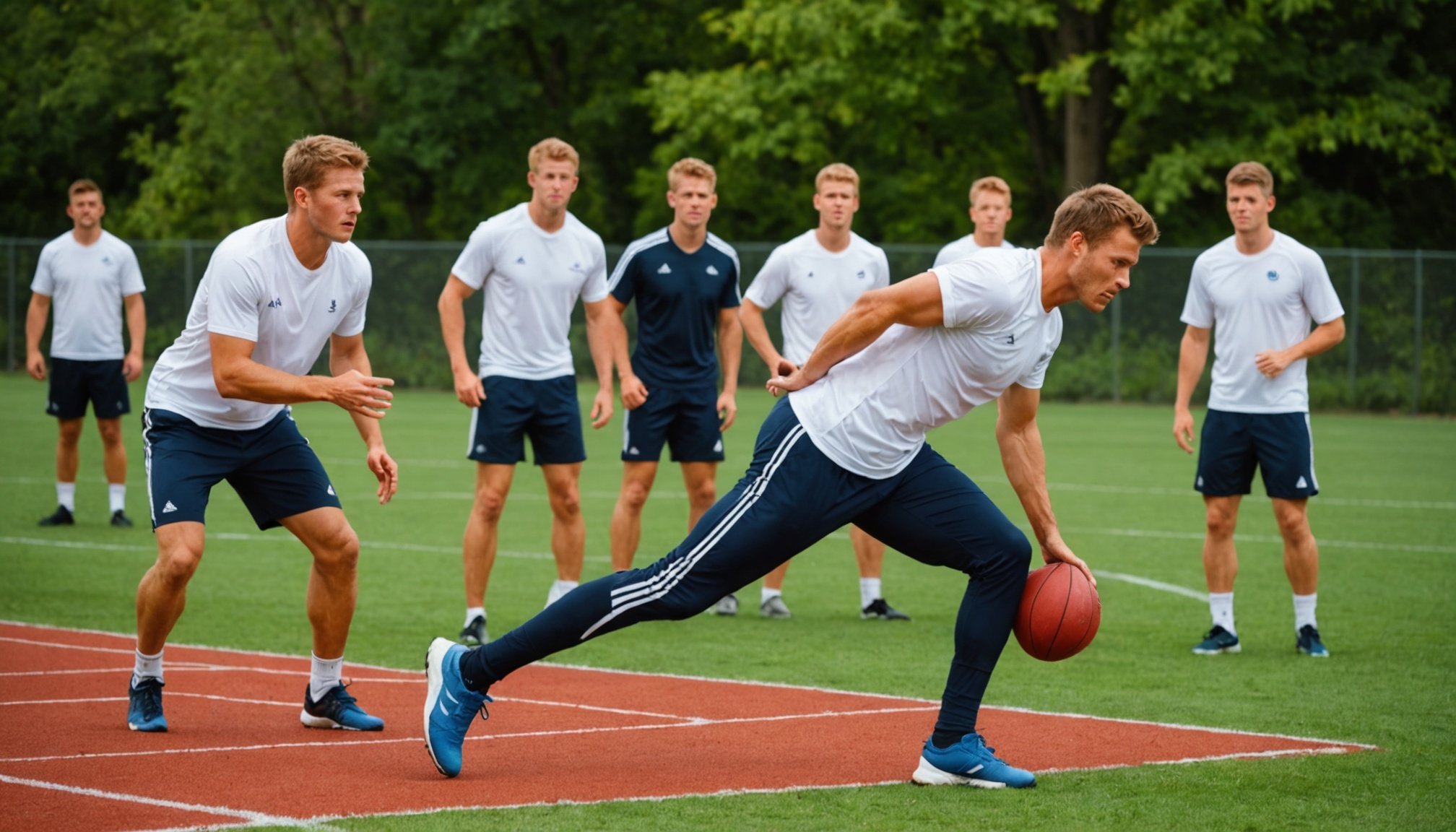Warming up is a vital phase in any physical activity, especially for athletes and sports enthusiasts. It not only prepares the body for more strenuous exercise, but it also enhances performance and reduces the risk of injury. Understanding how to effectively warm up through dynamic and specific exercises tailored to your sport can lead to better strength, flexibility, and readiness for activity. In this article, we will explore the key elements of an effective warm-up routine, focusing on different sports and the unique needs of athletes.
The Importance of Warming Up in Sports
A proper warm-up routine serves multiple purposes in sports and physical activities. First, it gradually increases your heart rate and circulation, ensuring that blood flows to your muscles and vital organs. This boost in blood flow prepares the body for the upcoming strain, reducing the risk of injury. Second, warming up helps to enhance muscle elasticity and joint mobility. Without the right warm-up, muscles may be stiff, making them more susceptible to tears or strains during intense exercise.
Have you seen this : Mastering Hydration: Top Techniques for Endurance Riders to Stay Energized
Furthermore, warming up can improve your mental focus. Engaging in a structured routine allows you to mentally prepare for the challenges ahead, leading to improved performance. When your mind is sharp and your body is ready, you can execute specific exercises more effectively, regardless of whether you’re playing soccer, basketball, or engaging in weight training.
Different sports might require varying warm-up techniques, but the overarching goal remains consistent: to ensure that you can perform at your best while minimizing the risk of injury. Emphasizing the importance of a warm-up routine will not only help you physically but also mentally, setting a positive tone for the entire training session or competition.
Also to discover : What are the benefits of early specialization versus multi-sport participation for young athletes?
Dynamic Stretching vs. Static Stretching: What’s Best for You?
When considering warm-up routines, one often encounters dynamic and static stretching. It’s crucial to understand the distinction between these two types of stretching and how they can impact your body’s readiness for exercise. Dynamic stretching involves movement-based stretches that help to increase your heart rate and blood flow to the muscles. Instead of holding a stretch, as with static stretching, you move through ranges of motion that mimic the activity to come. This method prepares the muscles for rapid movements and enhances overall performance.
In contrast, static stretching consists of holding a stretch for an extended period. While it has its place in post-exercise recovery or during cooldowns, incorporating it into the warm-up can lead to decreased muscle strength and performance. Athletes should focus on dynamic stretches during their warm-up to avoid compromising their strength and explosiveness.
Incorporating dynamic stretching into your warm-up can be as simple as leg swings, arm circles, or walking lunges. These movements not only enhance flexibility but also activate the muscles that will be used in your sport. Conversely, save static stretching for after your workout when your muscles are warm and primed for elongation. By doing so, you’ll maintain your strength and enhance your body’s overall performance.
Specific Warm-Up Exercises for Different Sports
As athletes, tailoring your warm-up to the sport you’re engaging in is essential. Each sport has unique demands on the body that necessitate specific warm-up exercises. For instance, a basketball player may benefit from warming up with agility drills, lateral shuffles, and jump stretches, while a swimmer might focus on shoulder rolls and hip mobility exercises.
For endurance sports like running or cycling, start with a light jog or easy cycling to elevate your heart rate, followed by dynamic stretches that focus on the legs, such as high knees or butt kicks. This approach primes the leg muscles for sustained activity and can significantly improve overall endurance.
Team sports such as soccer and rugby require specific exercises aimed at enhancing coordination and agility. Incorporate movements that simulate the actions performed during the game, such as side shuffles or dribbling drills. This kind of warm-up not only prepares the body physically but also mentally primes athletes for the game’s pace and intensity.
Lastly, for strength training, take the time to warm up with lighter weights and mobility work specific to the major muscle groups you plan to engage. This strategy not only enhances performance but also significantly reduces the risk of injury. By recognizing the specific needs of your sport and adjusting your warm-up routine accordingly, you set yourself up for a successful training session or competition.
Time Management: Making the Most of Your Warm-Up
Time is often a constraint in our busy lives, but when it comes to warming up, giving it the necessary time is crucial. A common misconception is that warm-ups require extensive periods. However, a well-structured warm-up can be accomplished in as little as 10-15 minutes if executed efficiently. Prioritizing this time can significantly impact your performance and readiness for exercise.
To maximize effectiveness, break your warm-up into segments. Start with a few minutes of light aerobic activity to elevate heart rate, followed by dynamic stretching to enhance mobility. As you progress, incorporate specific exercises that relate directly to your sport. For example, if you are a runner, include drills that mimic running motions, such as leg swings and skipping.
Creating a routine that you can follow each time you train or compete will also be beneficial. It reduces the time spent figuring out what to do and allows you to focus on execution. Moreover, the familiarity of a routine can mentally prepare you and signal your body that it’s time to perform.
Ultimately, by managing your time wisely and understanding the structure of an effective warm-up, you can greatly enhance your athletic performance while minimizing the risk of injury. Remember, investing time in warming up is not just a formality—it’s a crucial element in your journey as an athlete.
In conclusion, warming up is an essential component of any sports activity that significantly impacts overall performance and safety. By understanding the importance of warming up, differentiating between dynamic and static stretching, and tailoring your routine to the specific demands of your sport, you will be better equipped to enhance your athletic ability while minimizing the risk of injury. Remember to manage your time effectively, creating a warm-up routine that suits your needs. Embrace the power of a well-structured warm-up, and watch as it transforms your approach to training and competition.











